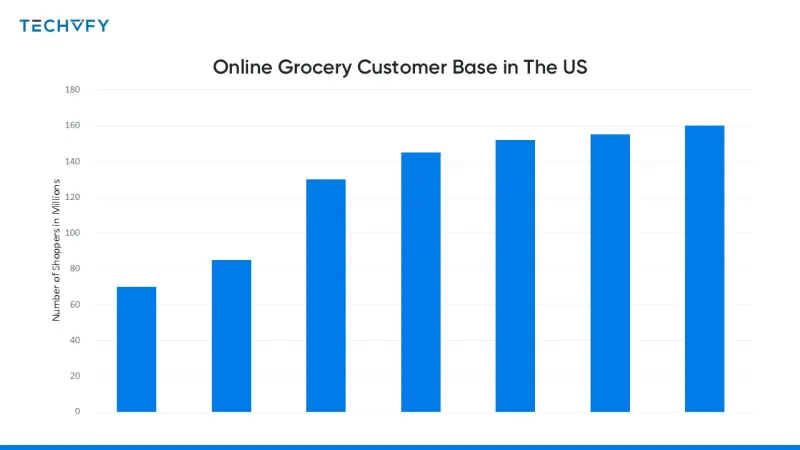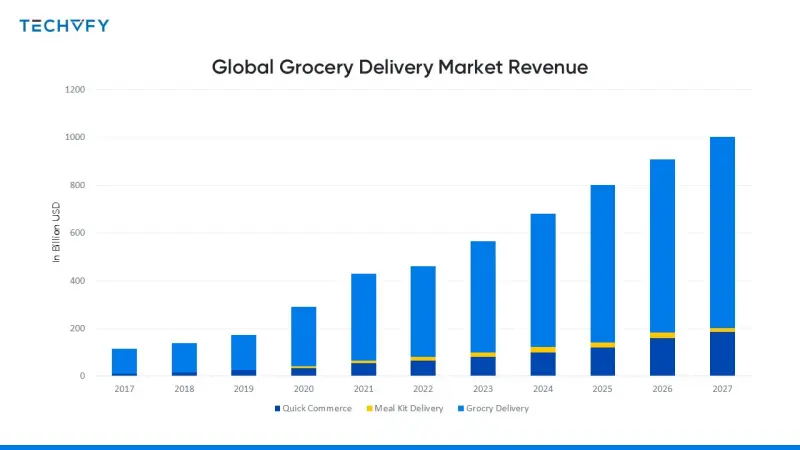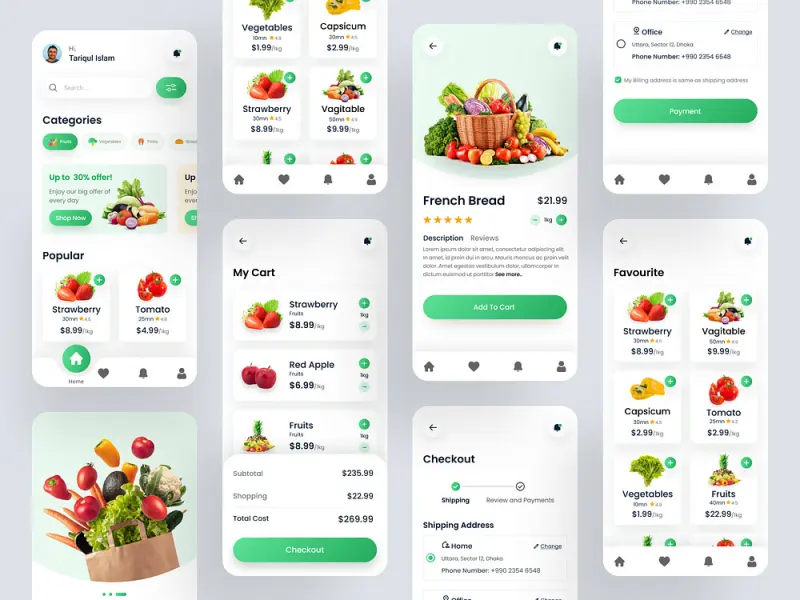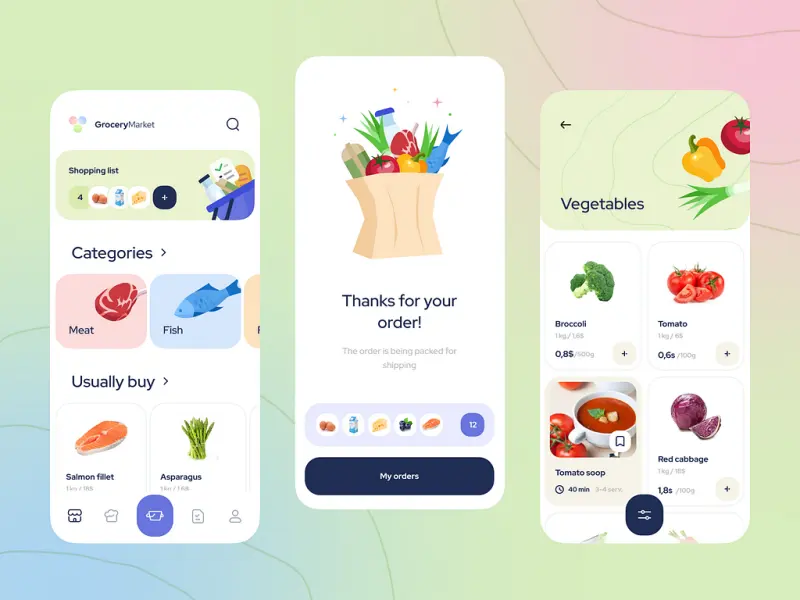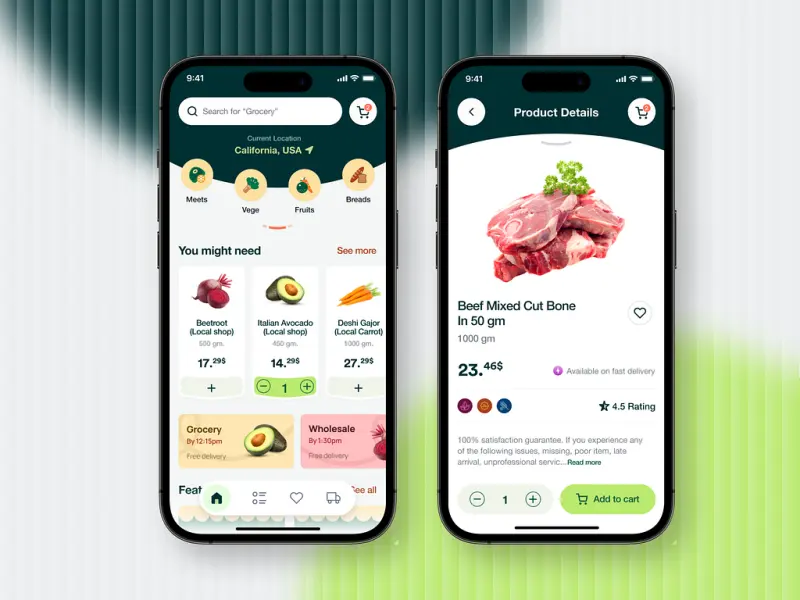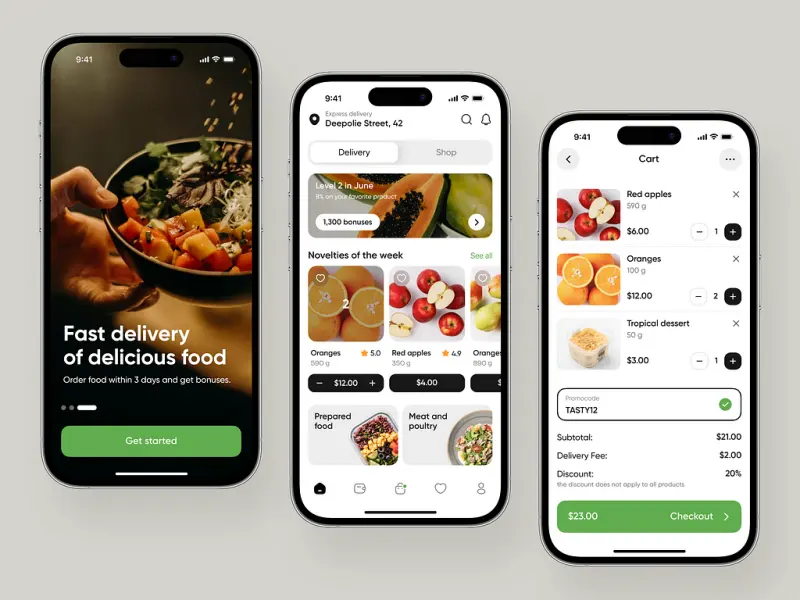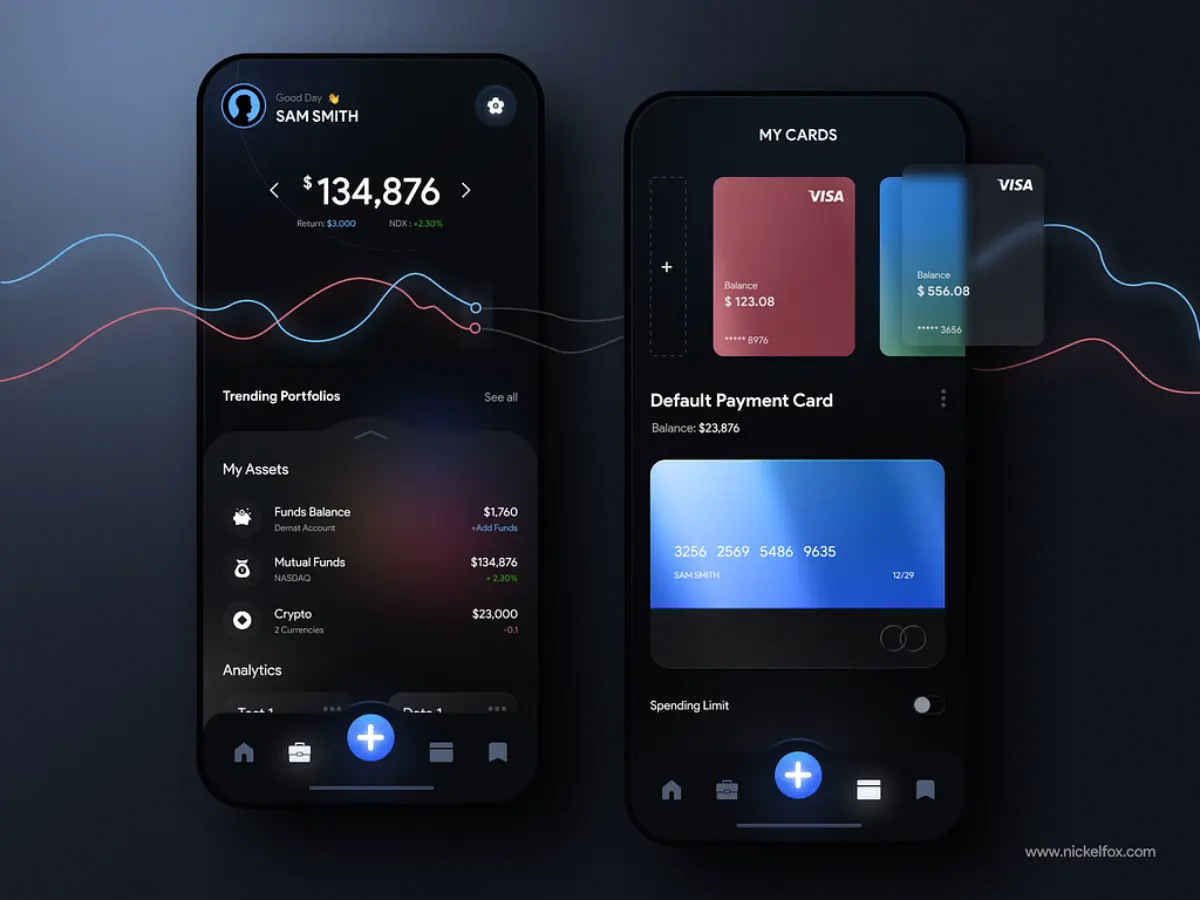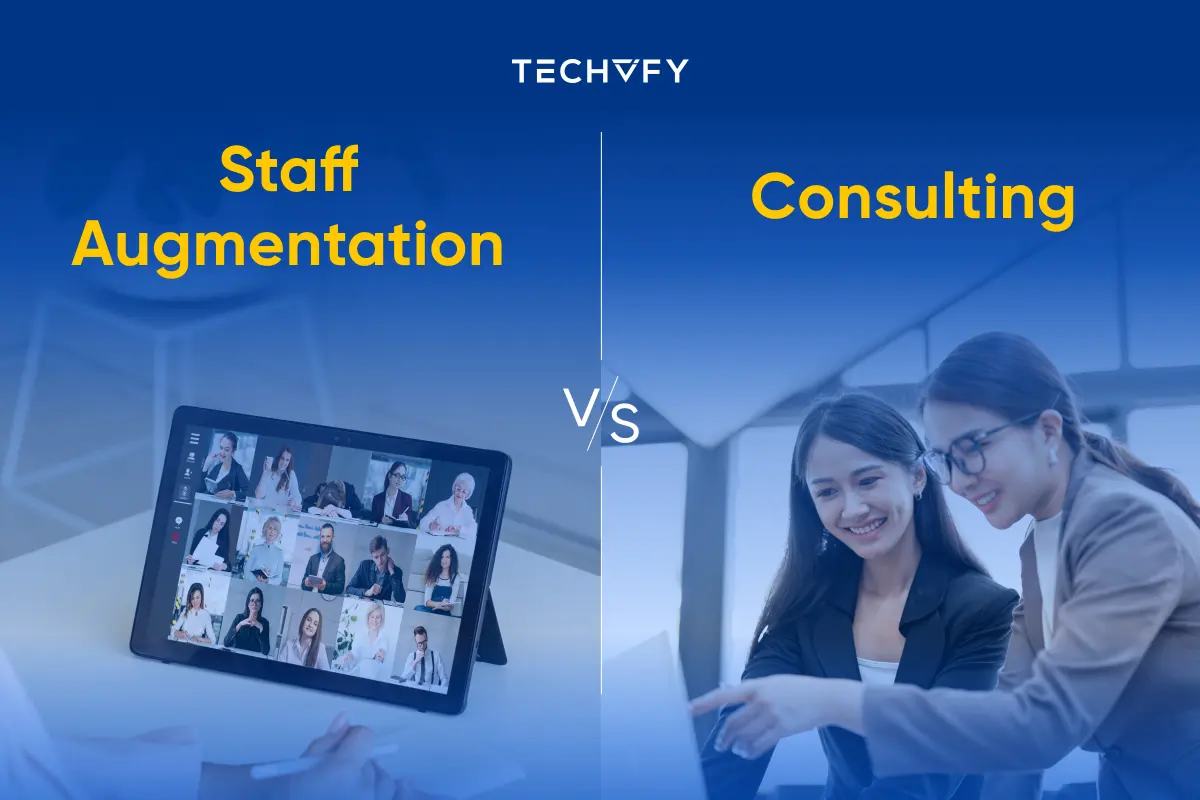The Ultimate Guide to Grocery Delivery App Development
- TECHVIFY Team
- 0 Comments
Shopping in traditional brick-and-mortar stores is steadily declining, with industry experts predicting a significant rise in eCommerce over the coming decades, largely driven by grocery delivery app development. Many grocery store owners are now exploring the idea of building online grocery platforms with delivery services to expand their reach and gain a competitive edge in the market.
Statistics show that around 54% of grocery retailers are integrating new services into online shopping via mobile apps, driven by changing consumer behavior. Shoppers are increasingly drawn to the convenience and perks of mobile apps, such as exclusive e-coupons, loyalty programs, and personalized offers. As a result, the online grocery market presents a lucrative opportunity for store owners and investors looking to capitalize on this growing trend.
In this article, we go over the necessity of grocery delivery app development and how to build one for your business.
I. Grocery Delivery Market Trends: Key Insights for Future Growth
According to data from Statista, the global grocery delivery market is projected to generate revenue of $565.30 billion in 2023. Furthermore, it is expected to grow at a compound annual growth rate (CAGR) of 15.41%, reaching a market volume of $1,003.00 billion by 2027.
Grocery delivery market by Statista
In the U.S. alone, the online grocery customer base is projected to reach 163 million by 2025, representing nearly half of the population. This explosive growth in the online grocery market has been accelerated by post-pandemic shifts, including social distancing measures, the fast-paced lifestyles of modern consumers, and the tech-savvy younger generation that now prefers to shop online. With these trends continuing, the online grocery market is well-positioned for substantial growth in the coming years.
Source: Statista
II. The Many Benefits of Grocery Delivery App Development
Optimized Inventory and Order Management
Managing the large volume of grocery orders that flood throughout the day can be daunting without the right tools. Grocery delivery mobile apps provide an optimized inventory and order management system that helps store owners track and manage everything in real-time. Admins can monitor the activities of delivery partners, drivers, and shoppers, ensuring that everything runs smoothly.
Additionally, these apps allow store owners to keep a close eye on their stock levels so they can restock items as needed and avoid running out of popular products. The ability to track order volumes also provides valuable insights into the online store’s performance, helping owners make data-driven decisions.
Unparalleled Customer Convenience
The convenience that grocery delivery apps offer to customers is unparalleled. Instead of spending time traveling to the store, searching for specific items, standing in long checkout lines, and carrying heavy bags home, customers can now order everything they need with just a few taps on their mobile devices.
For people living busy lives, who struggle to find the time for traditional grocery shopping, these apps have become a lifeline. They allow users to shop for groceries from the comfort of their homes, whenever it’s most convenient, and have everything delivered right to their doorsteps. This level of convenience is something that physical stores simply can’t compete with.
Learn More On:
Leveraging Consumer Behavior Data for Personalized Offers
One of the key advantages of grocery delivery apps is the ability to gather and analyze consumer behavior data. This data is incredibly valuable for store owners, as it allows them to better understand their customers’ preferences, shopping habits, and consumption patterns. By leveraging this data, stores can offer personalized discounts, promotions, and product recommendations, which can significantly enhance the customer experience.
Personalized offers make customers feel valued and understood, which in turn increases their loyalty to the store. Moreover, by targeting customers with the right offers at the right time, store owners can boost sales and drive more repeat business.
Boosting Customer Loyalty with Customized Loyalty Programs
Building and maintaining customer loyalty is essential for any successful online grocery store. When launching a grocery delivery app, offering a well-designed loyalty program is a must. These programs help keep customers engaged and encourage them to return to the app for future purchases. Store owners can create customized loyalty programs that cater to their customers’ shopping habits.
For example, point-based systems, punch cards, and referral bonuses can motivate customers to make repeat purchases. Additionally, offering exclusive rewards, discounts, and special offers to loyal customers can further strengthen their relationship with the store. A well-executed loyalty program not only helps retain existing customers but also attracts new ones, ensuring long-term success for the business.
Reducing Overhead Costs and Improving Operational Efficiency
Traditional grocery stores require a significant amount of overhead, including staffing, utilities, and other operational costs. However, by shifting to an online grocery delivery model, store owners can significantly reduce these expenses. Once an app is developed, the primary costs are related to app maintenance, which is far lower than the ongoing costs of running a physical store.
Additionally, a well-designed grocery delivery app can streamline many operational processes, improving efficiency. For example, automated order management systems, inventory tracking, and delivery scheduling can all be managed through the app, reducing the need for manual intervention and minimizing the potential for human error. Over time, this can lead to significant cost savings and increased profitability.
Build a grocery delivery app
Real-Time Order Tracking for Enhanced Transparency
One of the standout features of grocery delivery apps is the ability to provide real-time order tracking. Customers can monitor the status of their deliveries in real-time, giving them peace of mind and keeping them informed about when their groceries will arrive.
Real-time tracking also allows customers to see who their delivery driver is, where their order is on the route, and how long it will take to reach them. This feature provides valuable oversight into delivery operations for store admins, allowing them to quickly address any issues that arise and ensure smooth and timely deliveries.
Providing Multiple Payment Options for Maximum Flexibility
In today’s digital world, consumers expect flexibility when it comes to payment options. Grocery delivery apps make it easy for customers to pay for their orders in a way that suits them best. Whether they prefer to use credit cards, debit cards, UPI, or other digital payment methods, these apps provide a range of secure payment options.
The ability to choose how they pay makes the shopping experience more convenient and tailored to the customer’s preferences. Moreover, digital payments are often faster and more secure than traditional methods, reducing the risk of fraud and ensuring a smooth transaction process.
III. Must-Have Features for a Grocery Delivery App
User Panel:
- Signup/Login: Users should have the option to create an account and log in using their credentials, such as a username and password.
- Login via Social Media: Users can easily log in through their social media accounts, offering quicker access.
- Category Selection: After logging in, users can browse through various categories, such as fruits, vegetables, or household items, to find what they need.
- Bookmark Feature: Users can mark products as favorites, allowing them to easily revisit and purchase those items later.
- Add to Cart: Users can add multiple products to their virtual cart, just like a basket, and checkout when ready.
- Multiple Payment Options: The app should support various payment methods, including debit cards, credit cards, and other digital options.
- Review and Rating Feature: Users should be able to leave reviews and ratings for products, helping others make informed buying decisions.
- Checkout Feature: A seamless and user-friendly checkout process is essential for a smooth shopping experience.
- Coupons and Promotions: Users should be able to apply coupons or promotional offers during checkout to get discounts.
- Referral Feature: Users can refer friends to the app and earn rewards or bonuses for successful referrals.
- Return and Replacement Feature: Users should have the ability to request returns or replacements directly through the app if something is wrong with their order.
Admin Panel:
- Login: The admin can access the backend system by logging in securely.
- Dashboard: The admin dashboard should display key data such as sales figures, order status, and other relevant metrics.
- Return and Replacement Management: The admin can approve or reject return and replacement requests based on the customer’s complaint and product condition.
- Business Reports: Admins should have access to filtered and sortable business reports for better decision-making.
- User Management: The admin can manage all user accounts, including editing, adding, or removing users.
- Content Management: Admins should be able to manage the content across the app, such as product descriptions and images.
- Payment Management: Admins can oversee and manage payment transactions, including taxes and commissions.
- Product Management: Admins can add, edit, or disable products in bulk, keeping the product list up to date.
Grocery Delivery App Panel:
- Delivery Boy Login: Delivery personnel can log into the app, view their assigned orders, and pick them up for delivery.
- Delivery Boy Tracker: GPS tracking allows customers to track their orders in real-time via Google Maps.
- Route Optimization: The app should automatically generate the shortest route for delivery, improving efficiency and cutting down on delivery times.
- Signature Feature: Upon delivery, users can confirm receipt by signing within the app.
- Return Process: For returned items, delivery personnel can follow the same process as delivery to either collect or replace the product.
Have a Project Idea in Mind?
Get in touch with experts for a free consultation. We’ll help you decide on next steps, explain how the development process is organized, and provide you with a free project estimate.
IV. Step-By-Step Guide to Develop a Grocery Delivery App
Developing a grocery delivery app requires a structured and strategic approach. Below are the essential steps that will help you build a successful app and start your business.
Step #1: Draft a Strategy
The first step is to develop a comprehensive strategy for your grocery delivery business. This involves identifying your target audience and target location. Understanding your audience’s preferences and behaviors is key to creating an app that meets their needs. You should start by analyzing the shopping patterns of your target demographic, which will help you define the features they expect in a grocery delivery app.
Additionally, researching market trends and competitors will allow you to stay updated and innovative. This research will enable you to craft a brand identity and set the foundation for generating consistent revenue. With a well-defined strategy, you’ll have a clear roadmap for app development and business growth.
Step #2: Create a Prototype
Once your strategy is in place, the next step is to create a prototype of your app. A prototype is an interactive model that allows you to test the app’s design and functionality before full-scale development begins. This stage is crucial because it allows you to gather feedback from a select group of users.
Testing the prototype with real users will provide valuable insights into what works and what needs improvement. Since no coding is required at this stage, you can rapidly make changes and iterate on the design until it aligns with user expectations. The goal is to finalize a prototype that addresses the needs of your target audience.
Grocery delivery app development
Step #3: Develop and Test
With a finalized prototype, you can now proceed to the actual development of the app. This step requires hiring skilled developers who will bring your app features to life using code. At the same time, you’ll need testers to ensure that the app works smoothly and that all bugs or issues are identified early.
During this phase, you’ll likely follow an agile development methodology, which allows for open communication, continuous feedback, and rapid iteration. Agile development ensures that any necessary changes or updates can be made as the app is being built, keeping the project on track.
Both the backend (the server-side infrastructure) and frontend (the user interface) will be developed simultaneously. Testing is crucial throughout this process to ensure that all features are functioning properly before moving to the next step.
Step #4: Pilot Launch
After development and testing are complete, it’s time for a pilot launch. This involves releasing the app to a limited audience—usually through platforms like Google Play and the Apple App Store.
The pilot phase allows you to:
- Gather early feedback from users.
- Identify any remaining bugs or performance issues.
- Release updates based on real-world data.
During this phase, you can also start refining your marketing and customer support strategies to prepare for a full-scale launch.
Step #5: Maintain
The final step in the development process is ongoing maintenance. After the app is launched, the work doesn’t stop. You will need to continually monitor the app’s performance, resolve any issues that arise, and release updates to improve functionality and user experience.
Regular updates will keep the app competitive and ensure that it stays aligned with user needs. Additionally, tracking usage analytics will offer insights into how users are interacting with the app, allowing you to make data-driven improvements. Maintenance also involves integrating new features and responding to user feedback, ensuring that your app remains relevant and user-friendly in the long term.
V. Best Grocery Delivery Apps Examples
There are several grocery delivery apps that have achieved significant success and are widely popular. Below are some of the standout examples:
1. Instacart
Instacart is a leading online grocery delivery platform currently servicing 26 states and the District of Columbia. Often referred to as the “Uber of grocery delivery,” Instacart connects customers with freelance shoppers who purchase groceries from stores like Costco, Whole Foods, and Petco. The service offers an Instacart Express membership for $149 annually, which breaks down to about $12.50 per month, providing free delivery on orders over a certain amount.
2. AmazonFresh
AmazonFresh is a prominent grocery delivery service available in select U.S. states, as well as international cities like Tokyo, Berlin, London, Munich, and Hamburg. Customers can choose from over 500,000 items and receive same-day delivery, often within a 2-3 hour window. The service also offers early morning deliveries, making it a convenient option for those with busy schedules.
Grocery delivery mobile app development
3. Vons
Vons is a supermarket chain operating in Southern Nevada and Southern California, known for its unique “Shop by History” feature. This feature allows users to quickly reorder previously purchased items, making it faster and more efficient than other services. Like other top grocery delivery platforms, Vons offers same-day delivery to meet customer demand for convenience.
4. Peapod
Peapod is one of the best online grocery stores based in Chicago, IL. The service delivers groceries from both its stores and warehouses, offering more than 12,000 products, including organic goods, deli items, and seasonal products. Peapod currently operates in the District of Columbia and 13 U.S. states, providing an extensive selection and reliable service for its customers.
Looking for a Software Development Company?
TECHVIFY is the best option for you. Book a free consultation to get an accurate time and cost estimation for your project.
VI. Challenges of Grocery Delivery Mobile App Development (With Their Solutions)
Developing a grocery shopping app comes with its own challenges, particularly regarding user experience, delivery logistics, and maintaining security. Here’s a breakdown of some common challenges and how to solve them effectively.
1. Design Constraints
When shopping in a physical grocery store, customers can easily navigate large shelves, organized into distinct sections like dairy, fruits, and vegetables. However, replicating this experience on a small mobile screen can be challenging. How do you make it easy for users to find the products they’re looking for without overwhelming them with too many items on a cramped screen?
Solution:
To overcome this design limitation, you can integrate multiple filtering options and search preferences. These features allow shoppers to quickly narrow down their choices based on categories, brands, or even dietary preferences. Additionally, you can design the app to have virtual sections, similar to a physical store layout. For example, create dedicated tabs or sections for different product categories (dairy, snacks, beverages), giving users a familiar experience that mirrors in-store navigation but on a smaller, more manageable scale.
2. “Can’t Touch” Experience
One of the primary concerns for online grocery shoppers is that they can’t physically inspect the items before purchasing. This is especially true for perishable products like vegetables and fruits, where freshness is a major concern. Customers often feel hesitant because they fear that the quality of the product they receive won’t match what they would pick in-store.
Solution:
To address this, you can enhance the product visualization by integrating Augmented Reality (AR) features, allowing users to view 3D models of the products. This gives them a better sense of size, texture, and appearance. Additionally, focus on building trust by ensuring that your app offers high-quality, fresh products—perhaps even promoting organic or locally sourced items. Regular customer reviews and ratings can also help assure new users about the quality of the products they are purchasing.
3. Delivery Delays
Customers expect their groceries to be delivered promptly, especially when ordering perishable items. However, delivery times can be affected by various factors like traffic, incorrect navigation, or poorly planned routes, leading to delays and frustrated customers.
Solution:
To ensure timely deliveries, you can integrate your app with reliable mapping services such as Google Maps to identify the shortest and most efficient routes. Additionally, you can implement real-time delivery tracking and set preset delivery windows (e.g., 1-hour slots), allowing customers to select a convenient time. This prevents unrealistic delivery expectations and gives users a more accurate estimate of when their groceries will arrive.
Grocery delivery app development example
4. Personalization and Localization
Customers increasingly expect personalized experiences when shopping online. They may want features like repeat orders, favorite items, and the ability to compare products from different brands, but not all apps provide these options.
Solution:
You can enhance personalization by using AI-powered tagging to analyze users’ past orders and suggest relevant products. Additionally, offering a comparison feature that allows customers to view side-by-side comparisons of similar products (in terms of price, weight, and quality) can help improve decision-making. Instant cart-editing features can also streamline the shopping process, making it easier for users to adjust their orders on the go.
5. Onboarding
A complicated onboarding process can turn users away before they even start using the app. If the signup process is too long or if users are forced to go through extensive tutorials, they may abandon the app altogether.
Solution:
To prevent this, keep the onboarding process simple and streamlined. Offer a one-tap login option using social media accounts, Google, or Apple. Additionally, provide a ‘skip the tutorial’ feature for users who are already familiar with grocery apps, allowing them to dive straight into shopping. By simplifying the process, you can keep users engaged and reduce the chance of dropout.
6. Technical Issues
A poor user interface (UI) or user experience (UX) can lead to app crashes, slow load times, and frustrating navigation, driving users away. Technical issues like these can severely impact customer retention and app ratings.
Solution:
To avoid such problems, hiring a skilled development team with expertise in creating a smooth, intuitive UI/UX is essential. Regular app updates and bug fixes will ensure that the app remains stable and responsive. You should also prioritize performance testing during development to identify and resolve potential issues before they affect users.
7. Payment & Security Issues
With the rise in online transactions, security is a major concern for users. Shoppers want to feel confident that their payment and personal data are safe, but with increasing cyber threats, ensuring this security can be challenging.
Solution:
Implement advanced security protocols like end-to-end encryption for all transactions. Regular security audits and debugging should be performed to prevent vulnerabilities. Additionally, restrict access to critical data by avoiding third-party app permissions and ensure that your app complies with major security standards such as PCI DSS (Payment Card Industry Data Security Standard).
Conclusion
As the grocery shopping industry continues its shift toward digital platforms, the demand for convenient, fast, and reliable grocery delivery services is growing exponentially. Developing a grocery shopping app helps store owners meet this demand and opens the door to new opportunities for growth, improved operational efficiency, and enhanced customer loyalty. The future of grocery shopping lies in the seamless integration of technology and now is the perfect time to capitalize on this trend.
Ready to build your grocery delivery app? Contact TECHVIFY for a free consultation today. Our team of experts will guide you through the entire process, from concept to launch, ensuring a seamless and professional solution tailored to your needs.
TECHVIFY – Global AI & Software Solutions Company
For MVPs and Market Leaders: TECHVIFY prioritizes results, not just deliverables. Reduce time to market & see ROI early with high-performing Teams & Software Solutions.
- Email: [email protected]
- Phone: (+84)24.77762.666




